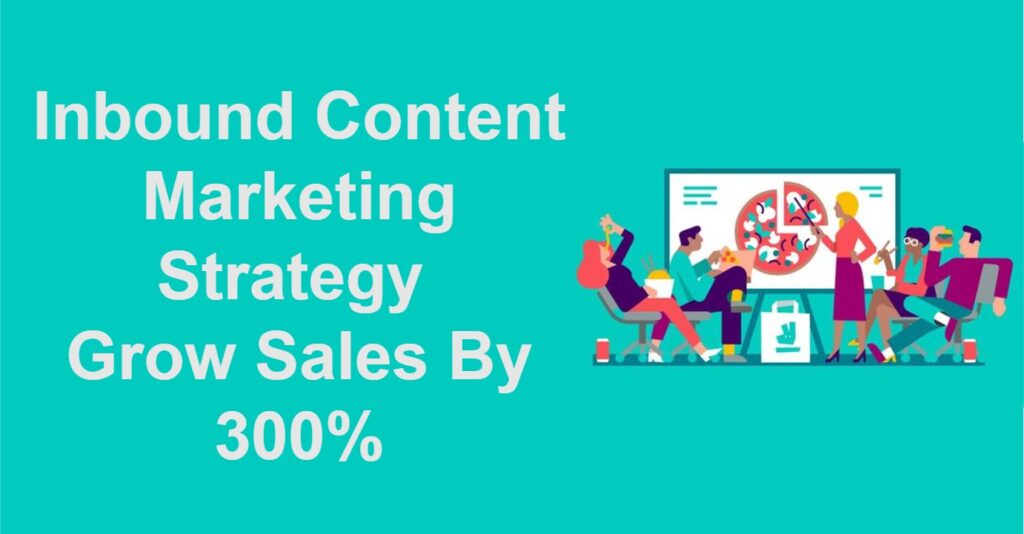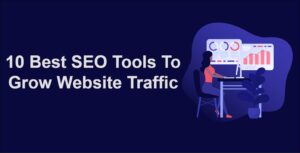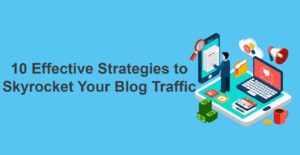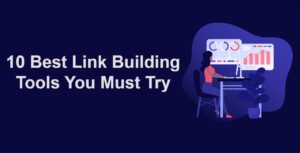In today’s digital age, where consumers are bombarded with advertising messages, it’s essential for businesses to adopt a strategic approach to capture their target audience’s attention. Enter inbound content marketing – a strategy that focuses on providing valuable and relevant content to attract and engage potential customers.
In this guide, we’ll delve into the world of inbound content marketing and explore effective strategies to create, distribute, and optimize content that drives organic traffic and conversions.
Inbound content marketing is a dynamic strategy that aims to build lasting connections with your audience by delivering value at every stage of their journey. By understanding your audience’s needs, creating compelling content, nurturing leads, and optimizing your efforts based on data, you can create a content marketing strategy that not only boosts your brand’s visibility but also drives meaningful engagement and conversions.
Embrace the power of inbound content marketing to position your business as a trusted resource and drive sustained growth in the digital landscape.
Inbound Content Marketing Strategy
What is Inbound Content Marketing?
Inbound content marketing is a methodology that revolves around creating and distributing content that addresses the needs and interests of your target audience. The goal is to attract prospects naturally and guide them through the buyer’s journey, ultimately leading to conversions and brand loyalty.
The Importance of Inbound Content Marketing
Unlike traditional outbound marketing, which interrupts consumers with advertisements, inbound content marketing focuses on building meaningful relationships with customers. By providing valuable information, solving problems, and establishing your brand as an authority in your industry, you can create a positive impression that resonates with your audience.
How inbound content marketing beneficial for small businesses
Inbound content marketing offers profound advantages for small businesses adopting a strategic approach. Key elements include creating valuable, contextually relevant, and consistently delivered content. Furthermore, it involves deeply understanding the target audience and effectively utilizing diverse digital channels, including websites, blogs, social media platforms, and email marketing campaigns.
Over time, this meticulously crafted strategy fosters the expansion of a small business’s customer base and leads to substantial revenue growth. Additionally, it enables the establishment of a robust and authoritative online presence, reinforcing the brand’s position in the market and enhancing its competitiveness.
Inbound content marketing can be highly beneficial for small businesses in several ways:
1. Cost-Effective:
Inbound marketing, especially content creation, can be cost-effective compared to traditional advertising methods. Small businesses with limited budgets can create valuable content and distribute it through digital channels relatively cheaply.
2. Attracting Targeted Traffic:
Inbound content marketing allows small businesses to attract and engage with a specific target audience. By creating content tailored to the needs and interests of potential customers, businesses can draw in individuals who are more likely to be genuinely interested in their products or services.
3. Building Brand Awareness:
Consistently producing high-quality content establishes your brand as an authority in your industry. Over time, this can increase brand awareness and trust among your audience.
4. Lead Generation:
Content marketing can be an effective lead generation tool. By offering valuable content in exchange for contact information (e.g., email addresses), small businesses can grow their list of potential customers and nurture those leads into paying customers.
5. Search Engine Visibility:
Quality content incorporating relevant keywords can improve your website’s ranking. This can result in higher visibility and more organic traffic, reducing the need for expensive paid advertising.
6. Educating Customers: Content marketing allows small businesses to educate their audience about their products or services. This can be particularly helpful for businesses offering complex or innovative solutions that require explanation.
7. Nurturing Customer Relationships: Content marketing isn’t just about acquiring new customers; it’s also about nurturing relationships with existing customers. You can keep customers engaged, informed, and loyal by providing valuable content.
8. Measurable Results: Inbound marketing allows for measuring key performance indicators (KPIs) such as website traffic, conversion rates, and ROI. Small businesses can use these metrics to assess the effectiveness of their content marketing efforts and make data-driven decisions.
9. Competing with Larger Businesses: Well-executed content marketing can level the playing field for small businesses, allowing them to compete with larger competitors in terms of online visibility, audience engagement, and thought leadership.
Tips for Crafting an Effective Inbound Content Marketing Strategy
1. Define Your Target Audience
Before creating content, it’s crucial to understand your target audience’s demographics, preferences, pain points, and goals. This information helps you tailor your content to meet their specific needs and interests.
2. Set Clear Objectives
Identify your goals for your inbound content marketing strategy. Do you want to increase brand awareness, drive website traffic, generate leads, or boost conversions? Setting clear objectives helps you measure the success of your efforts.
3. Keyword Research and SEO
Keywords play a vital role in making your content discoverable by search engines. Conduct thorough keyword research to identify relevant search terms that your audience is using. Incorporate these keywords naturally into your content to improve your search engine rankings.
4. Create Valuable and Relevant Content
The heart of inbound content marketing is high-quality content. Create blog posts, articles, videos, infographics, and other formats that provide value to your audience. Address their pain points, answer their questions, and offer solutions that resonate.
5. Diversify Content Types
Different audience segments prefer different types of content. Diversify your content formats to cater to various preferences. This can include how-to guides, case studies, whitepapers, podcasts, webinars, and more.
6. Develop a Content Calendar
Consistency is key in content marketing. Develop a content calendar that outlines the topics, formats, and publishing dates of your content. This ensures a steady flow of relevant content to engage your audience.
7. Promote Your Content
Creating great content is only half the battle; you need to promote it effectively. Share your content on social media platforms, email newsletters, industry forums, and relevant online communities.
Nurturing Leads and Conversions
Nurturing leads and conversions are essential processes in marketing and sales that involve developing and maintaining relationships with potential customers (leads) and guiding them through the sales funnel to ultimately convert them into paying customers.
These processes are crucial for businesses to build trust, provide value, and increase the likelihood of successful sales. Let’s explore each concept in more detail:
Nurturing Leads
1. Lead Generation:
Lead nurturing begins with lead generation, attracting and collecting contact information from potential customers who have expressed interest in your products or services. This can be done through various methods, such as content marketing, social media, email campaigns, or events.
Implement Lead Magnets
A lead magnet is a valuable resource you offer in exchange for a user’s contact information. This could be an ebook, checklist, template, or webinar. Lead magnets help you build your email list and nurture leads.
2. Segmentation:
Not all leads are at the same stage of the buying process, and their interests may vary. Segmenting leads into different categories based on their demographics, behavior, or preferences allows you to tailor your nurturing efforts to their needs.
3. Personalize and Segment
Segment your audience based on their behavior, interests, and demographics. This allows you to send targeted content and offers that resonate with each segment.
4. Content Marketing:
Providing valuable and relevant content to your leads is fundamental to nurturing. This content can include blog posts, ebooks, webinars, and more. It helps educate and engage leaders, building trust and credibility.
5. Email Marketing:
Email campaigns are a powerful tool for lead nurturing. You can send personalized and targeted emails to leads at different stages of the buying journey. These emails can provide information, address questions, and offer incentives to move leads closer to conversion.
6. Lead Scoring:
Lead scoring assigns scores to leads based on their engagement and readiness to buy. It helps prioritize and focus efforts on leads more likely to convert.
Conversions:
1. Conversion Funnel:
The conversion funnel represents a lead’s stages before becoming a customer. These stages typically include awareness, consideration, and decision. Each stage requires different types of content and interactions.
2. Call-to-Action (CTA):
CTAs encourage leads to take a specific action, such as signing up for a newsletter, requesting a demo, or purchasing. Well-designed CTAs are strategically placed throughout your content and website.
3. Landing Pages:
Landing pages are dedicated web pages that capture lead information or facilitate a specific action. They often contain forms where leads can provide their details in exchange for valuable content or offers.
4. Analytics and Tracking:
Using analytics tools, businesses monitor and analyze the performance of their lead nurturing and conversion efforts. Metrics like click-through rates (CTR), conversion rates, and return on investment (ROI) help measure success and identify areas for improvement.
Measuring and Optimizing Your Inbound Content Marketing Strategy
Track Key Metrics
Monitor key performance indicators (KPIs) such as website traffic, conversion rates, bounce rates, and engagement metrics. Tools like Google Analytics can provide valuable insights into your content’s performance.
A/B Testing
To optimize conversions, businesses often perform A/B testing (split testing) on various elements of their marketing efforts, such as website design, email subject lines, or CTA buttons, to determine what resonates best with their audience.
Experiment with different content elements, such as headlines, images, CTAs, and email subject lines, to determine what resonates best with your audience.
Iterative Improvement
Based on your analytics and testing results, continuously refine and optimize your content marketing strategy. Identify what works well and replicate those successes in future campaigns.





